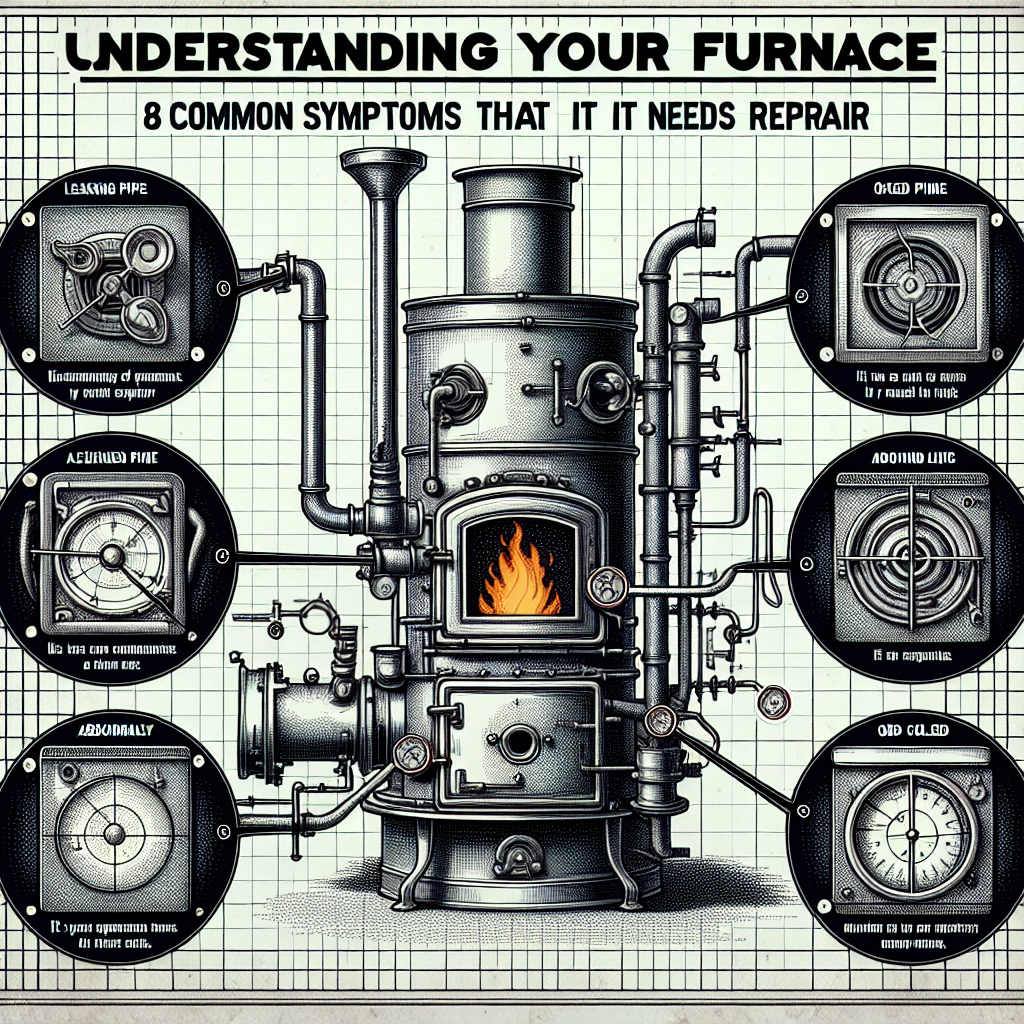As the chill of winter sets in, a functioning furnace becomes a household’s best friend. When your furnace works efficiently, it ensures a warm and cozy home, allowing you to focus on the important things—like sipping hot cocoa by the fire. However, when it starts acting up, it can lead to discomfort and rising energy bills. Recognizing the signs of a failing furnace is crucial. In this article, we’ll explore eight common symptoms that indicate your furnace needs repair, helping you keep your home warm and inviting.
1. Unusual Noises
Your furnace is designed to work quietly in the background. If you start hearing rattling, banging, or squealing sounds, it’s time to pay attention. Noises like these can signal loose parts, a malfunctioning blower motor, or even a clogged air filter. While sounding the alarm may seem dramatic, addressing these noises early can prevent more significant issues down the line.
2. Inconsistent Heating
Is your home feeling drafty despite cranking up the thermostat? Inconsistent heating could mean your furnace is struggling to distribute warm air evenly. Ductwork issues, filthy filters, or even an outdated furnace could be the culprit. Make it a priority to investigate this issue, as consistently changing temperatures can lead to discomfort and higher energy bills.
3. High Energy Bills
If you’ve noticed your energy bills spiking unexpectedly, your furnace could be the culprit. As components wear down, your system may require more energy to deliver the same level of warmth. Regular maintenance and timely repairs can ensure your furnace operates efficiently, helping you save money and energy while keeping your home comfortable.
4. Yellow or Flickering Pilot Light
A healthy furnace displays a blue pilot light, indicating proper gas combustion. If you notice a yellow or flickering flame, it could signify a severe problem, including carbon monoxide production. This is a serious safety hazard, and if you observe this condition, turn off your furnace immediately and contact a professional technician.
5. Strange Smells
Have you detected an unusual odor coming from your furnace? A burning smell may occur when dust accumulates on the heating elements, which can often be resolved by a good cleaning. However, if you smell gas or a more pungent, burning odor, it’s vital to seek help immediately. These may indicate gas leaks or electrical issues that need an expert’s attention.
6. Frequent On/Off Cycling
Your furnace should cycle on and off periodically; it’s part of its normal operation. However, if it’s cycling on and off more frequently than usual, it could be due to an oversized furnace, which is less efficient, or a malfunctioning thermostat. Ignoring this issue can lead to excessive wear and tear on your system, ultimately shortening its lifespan.
7. Excessive Dust in the Home
Are you finding dust accumulating faster than usual? An inefficient furnace can circulate dust and dirt throughout your home, especially if it has dirty filters or leaky ductwork. Not only does this affect your indoor air quality, but it can also lead to respiratory issues, particularly for those with allergies.
8. Age of the Furnace
Furnaces aren’t designed to last forever. If your unit is over 15-20 years old, it might be time to consider a replacement. While newer models are more energy-efficient and equipped with advanced features, an older furnace may require frequent repairs that pile up in costs.
Conclusion
Understanding your furnace and recognizing the warning signs can save you from freezing winter nights and unexpected repair bills. If you encounter any of these symptoms, don’t hesitate to reach out to a qualified HVAC technician. With their expertise, you can ensure your furnace continues to keep you warm and cozy all season long. Regular maintenance and timely repairs are key to extending the life of your furnace, helping you maintain a comfortable home environment.
Final Tips for Homeowners
- Schedule annual maintenance: Regular check-ups can highlight potential issues before they escalate.
- Change filters regularly: Clean filters improve efficiency and indoor air quality.
- Educate your family: Make sure everyone in your home knows how to operate the thermostat and can recognize warning signs.
Stay proactive, and you’ll enjoy a comfy sanctuary even on the coldest days!


